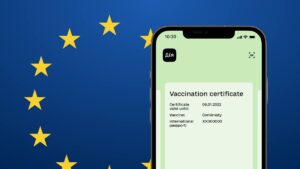
Back pain can be the first sign of serious problems that are important to identify in time. If you feel discomfort, do not delay diagnosis. ADONIS offers MRI of 3 spinal segments at a special price.
ADONIS – quality medicine for adults and children.
ADONIS is a network of private medical centers for adults and children. The ADONIS private clinic was founded over 25 years ago. Its network includes seven branches in Kyiv and the surrounding region, including a rehabilitation center and a stem cell laboratory. Doctors at the clinic’s branches provide consultations in 65 medical fields. In the current war situation, ADONIS branches with surgical departments provide high-quality medical care to military personnel and civilians.

According to the World Health Organization, 48,000 people around the world die of melanoma every year. It is one of the most dangerous types of cancer, because despite the small size of the primary tumor, it can quickly spread to any organs. Although once thought to be a disease of advanced years, it is now often diagnosed among people in their 30s and 50s. Also, women have melanoma more often than men.
Melanoma develops from melanocytes, which normally synthesize pigment to protect our skin from the effects of ultraviolet radiation, meaning sunlight.
95% of melanomas are caused by overexposure to ultraviolet radiation.
The risk of melanoma is increased in people who have:
– a history of sunburn, especially in childhood and adolescence;
– light skin, red hair, blue eyes (light skin phototype (Fitzpatrick I,II phototype);
– many moles (more than 50) or atypical moles;
– family history of melanoma, especially if the disease developed at a young age (i.e., under age 40);
– Age 50 or older;
– Previously diagnosed skin cancer, including basal cell cancer or squamous cell cancer.
How can you protect yourself and prevent the development of skin cancer?
Follow the basic rules of prevention:
-Avoid sunburns;
-Use protective creams;
-Examine your skin regularly and seek medical attention promptly for any changes.
When examining the skin, pay attention to changes in the size of moles, asymmetry of their edges, color changes, bleeding, pain or discomfort around the mole, formations that differ from other formations on the skin.
If you notice these signs of melanoma in time and contact a dermatologist or dermatologist – the development of the disease can be prevented.
Any skin growth must be removed with histological verification of the diagnosis. For this purpose CSD LAB Medical Laboratory performs histological tests, which help to determine if the neoplasm is benign or malignant.
And the exact results of the laboratory tests are the guarantee of a correct diagnosis and the selection of an effective therapy.

A COVID certificate can be generated on the 15th day after the diagnosis of COVID-19 is established within 105 days.
This is confirmed by changes in the procedure for the formation and use of a COVID certificate confirming vaccination against COVID-19, as well as a negative test result or a person’s recovery from this disease.
The adopted changes, in particular, provide that a COVID certificate can be generated no more than twice in one calendar year (if it is technically possible to record the generated COVID certificates).
As reported, in the last four days of October, Ukrainians generated 1 million COVID certificates in the Diia application, their total number has already reached 5 million and continues to grow.
Earlier, the government made it easier to obtain COVID-certificates in Diia: now this does not require an electronic signature, in particular, Diia.Signature, which required proof of identity using a Photo ID.